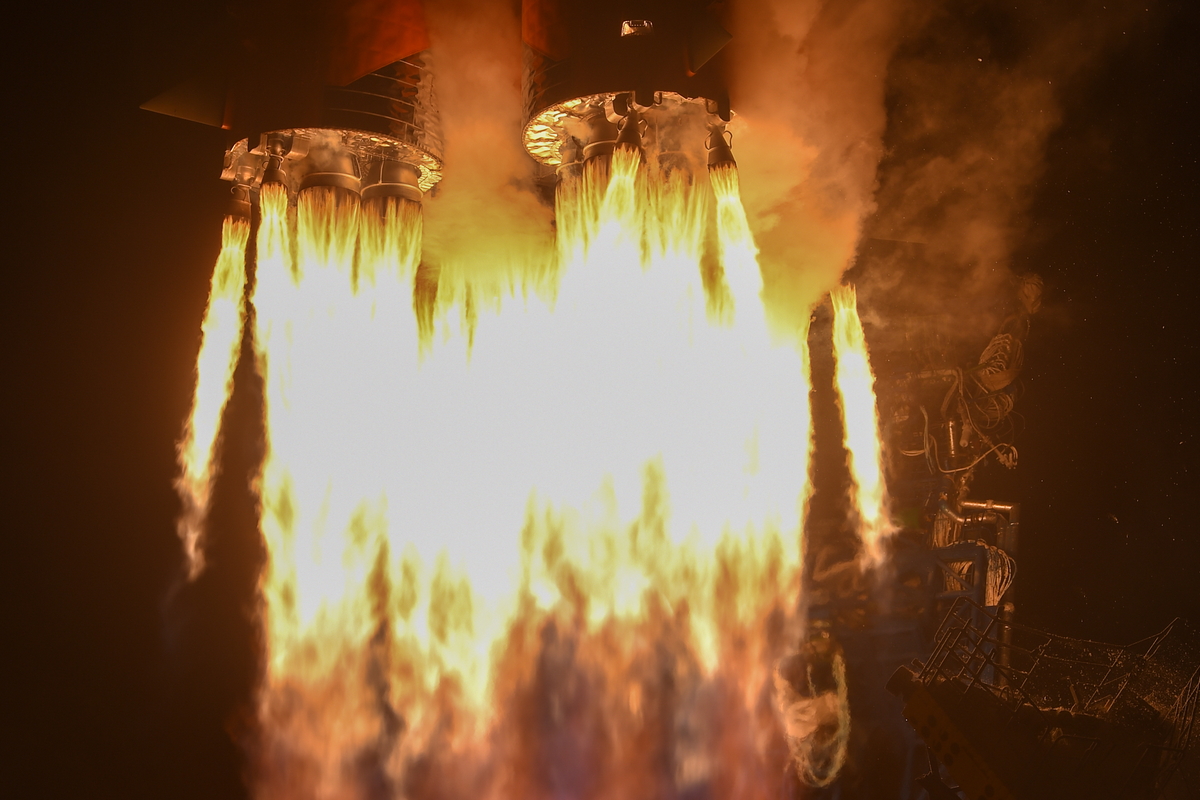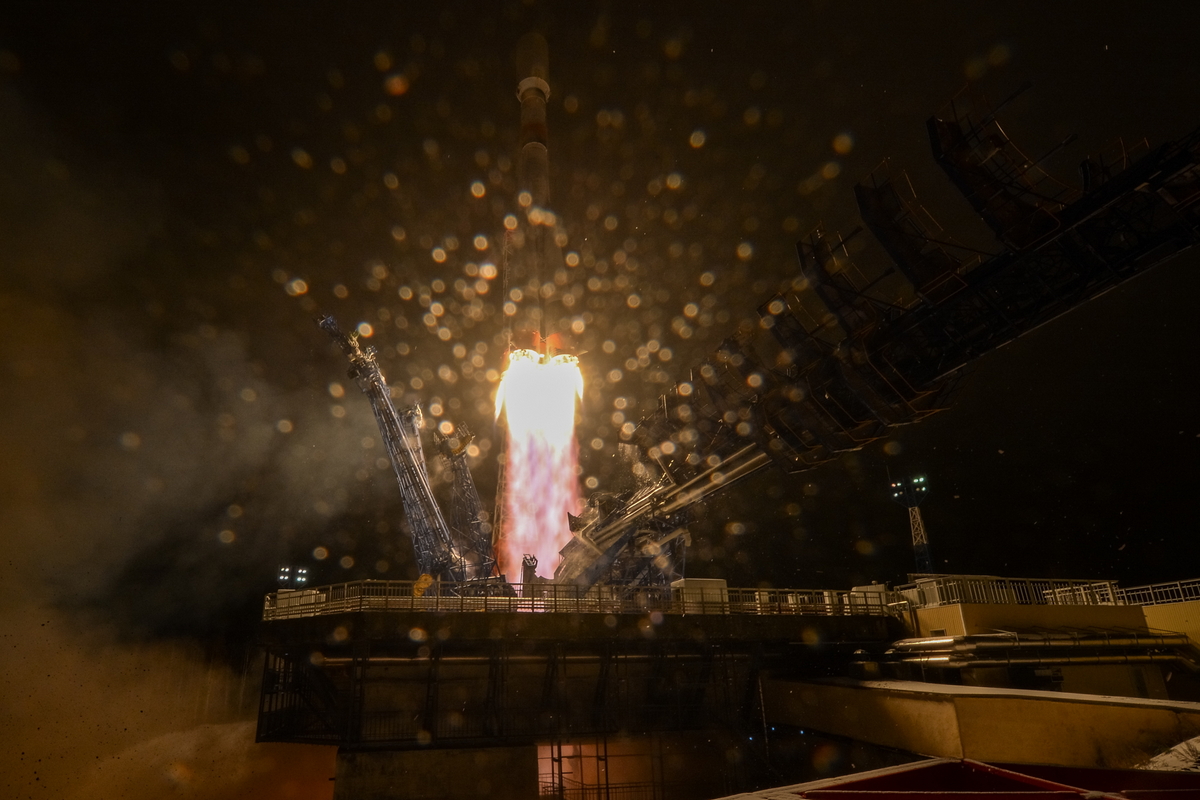Watch Russia launch new satellites in this awesome video
Video's views of launch shows flames spewing from multiple angles during ride to orbit
Russian rocketry shows off its power in a video of a Soyuz-2 booster launching four satellites into space this week.
A trio of Gonets-M satellites and a military nanosat called Kosmos-2548 (or ERA-1) successfully launched on Wednesday (Dec. 2) at 10:14 p.m. EST (0114 GMT or 3:14 a.m. Moscow time Thursday, Dec. 3) from the Plesetsk Cosmodrome, which is about 500 miles (800 km) north of Moscow.
The official video from the Russian Defense Ministry on Youtube shows incredible views of the rocket flying into space, with orange flames spewing into the black night sky.
The Soyuz rocket: Russia's venerable workhorse booster explained




"All pre-launch operations and the launch of the Soyuz-2 rocket went nominally," Russian space agency Roscosmos said in a statement. The Fregat upper stage of the rocket successfully sent the satellites into their proper orbits about two hours after launch, Roscosmos added.
Roscosmos described Kosmos-2548 as a "nanoscale service platform" for the Russian Defense Ministry, meant to test "advanced micro-devices and orientation and astrogation microsystems." The Gonets-M satellites will be used for low-Earth orbit commercial communications.
- Rocket Launches: The Latest Videos, Photos and Missions
- Russia's Space Centers and Launch Sites in Pictures
- The Top 10 Russian and Soviet Space Missions
This is is the 17th launch of Gonets-M satellites for a larger constellation, but only the second satellite set launched on a Soyuz rocket, according to RussianSpaceWeb.com. Previously, Gonets-M satellites were launched on the now-retired Rockot booster.
Get the Space.com Newsletter
Breaking space news, the latest updates on rocket launches, skywatching events and more!
The communications satellites normally operate in a near-polar orbit of 82.5 degrees, at roughly 870 miles (1,400 km) in altitude. That's roughly three times as high as the International Space Station's equatorial orbit of 250 miles (400 km).
The Gonets-M system includes four new regional stations in 2020 to improve operations, RussianSpaceWeb.com added. More satellites could be added to the constellation with the additional network capacity available on the ground, allowing for this latest launch.
Follow Elizabeth Howell on Twitter @howellspace. Follow us on Twitter @Spacedotcom and on Facebook.
Join our Space Forums to keep talking space on the latest missions, night sky and more! And if you have a news tip, correction or comment, let us know at: community@space.com.

Elizabeth Howell (she/her), Ph.D., was a staff writer in the spaceflight channel between 2022 and 2024 specializing in Canadian space news. She was contributing writer for Space.com for 10 years from 2012 to 2024. Elizabeth's reporting includes multiple exclusives with the White House, leading world coverage about a lost-and-found space tomato on the International Space Station, witnessing five human spaceflight launches on two continents, flying parabolic, working inside a spacesuit, and participating in a simulated Mars mission. Her latest book, "Why Am I Taller?" (ECW Press, 2022) is co-written with astronaut Dave Williams.









